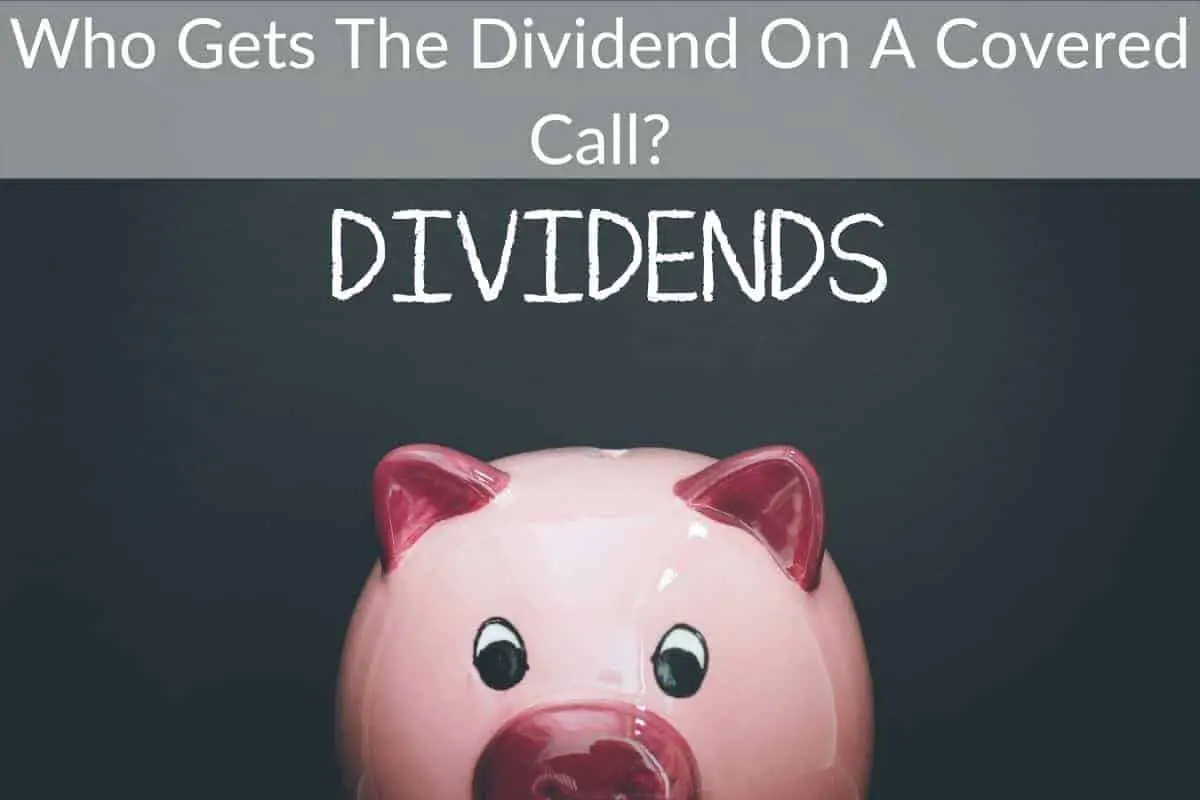Table of Contents
Everyone wants to make as much profit on their stock as possible which is why so many stock investors love using a covered call strategy. If only it were that easy to always get great returns!
*This post may contain affiliate links. As an Amazon Associate we earn from qualifying purchases.
Often people will buy stocks that have high dividend yields and then sell a covered call to generate even more income, but if you sell a covered call do you get the dividends too?
The person who owns the actual stock on the ex-dividend date is the one who gets the dividend paid to them. So if you sold a covered call and your shares are not called away from you prior to the ex-dividend date then you will receive the dividends for the shares that you own.
Applying a covered call strategy affords investors the rare opportunity of having their cake and eating it too. Often you will be able to not only get the income from the dividends but also get the income from the covered call premium as well.
In this article I will go over some additional information to help you understand the nitty-gritty details of the relationship between a covered call and dividend.
And as I’ll explain, you can only eat your cake if it doesn’t go rancid.
Understanding How Dividends Are Paid On Covered Calls
A covered call is a financial transaction that permits you to sell a call option on shares that you already own. The call is ‘covered’ when you have sufficient shares to cover the transaction of the sold option.
So for example let’s say that you own 100 shares of Apple stock. If you sold a call against those shares that would be considered a covered call since you own the shares of stock that you sold the call against.
Selling a call option implies that the buyer of the option can buy the shares (exercise the call) at a stipulated price (strike price) within a time frame given by the seller.
However, the buyer may choose not to buy the stock if the price has not increased.
As mentioned above, a covered call is not about selling options alone. It also involves owning the shares of a stock. If you don’t own the shares of the stock and you sell a call then that would be selling a “naked call” which is a far more risky option strategy.
The fascinating aspect of a covered call is that the option can be sold multiple times as long as no buyer has exercised the option. The seller gets to keep the premium from each buyer as his profit.
Premium is the amount paid by the buyer upon the purchase of an option.
That means as long as the stock price never reaching the strike price on expiration (and the call is never exercised) then you can sell a call over and over again on the same shares of stock!
When Does A Covered Call Seller Not Get A Dividend?
As mentioned earlier the person who owns the stock on the ex-dividend date will receive the dividend. So as long as the option has not been exercised before then the seller of the covered call will get the dividend.
However, if the stock price is above the strike price of the call option then it’s likely (although not guaranteed) that the call buyer will exercise the option so they will receive the dividend.
Let’s look at an example of how a covered call will typically go.
Let’s say that Kate buys 100 shares in a particular company at $50 each, for a total investment of $5,000. She expects that the share price will rise some (but not a lot) so she sells a call option contract with a strike price of $55.
Ken would then pay a premium of $2 for this call option. That means that Ken pays $200 to buy the option (remember options are in lots of 100 shares).
Suppose the share price did not increase beyond $55 but instead ended at $54, the probability of Ken exercising the option is virtually none; the call would then expire worthless.
As a result of that, Kate has just earned herself an extra $200 that Ken paid her and she still has her stock intact. Her cumulative profit would be $200 plus whatever the stock price increased to (so another $400).
In total she will currently be up $600 on the stock and option trade.
If instead the stock loses value and drops to $45 a share Kate would be out a total of $300. That’s because she keeps the option premium no matter what. So that premium helped her not lose as much money when the stock price dropped.
Conversely, if the shares increase to $60 prior to the ex-dividend date, Ken is likely to exercise the call and pay Kate the $55 strike price. Kate will then sell her 100 units at $5,500 total and also keep the $200 premium. Her entire profit is now $700.
However since Ken exercised the call prior to the ex-dividend date he would then get the dividend as well. So although he paid $55 for the stock that is worth $60 he would also get the dividend (which would boost his returns).
Kate would have made a total profit of $700, but since the call was exercised it forced her to sell off the shares that she owns so she no longer would receive dividend.
Dividends can significantly impact covered call strategies since it impacts the price of the underlying stock.
This hypothetical case study of Kate and Ken is an indication that the seller does not always get the dividend. Ultimately, the person who possesses the shares in the ex-dividend date walks away with the dividend.
Writing A Covered Call
The first thing you must be sure of when selling a covered call is that you own a stock that you are willing to sell a call option on. You must own at least 100 shares of the stock as 100 shares equals one call contract.
Then you can begin the process of call writing.
The call writing is simply you choosing the terms and conditions of an option. It entails these factors:
- Strike price: This is the amount the seller is willing to sell his stock if the buyer decides to exercise the call option.
- Expiration date: This is the duration within which the buyer can exercise the call option. Once a call has passed the expiration date it will either be exercised or expire worthless.
Both factors are essential in covered calls as they essentially decide how much of a premium you will get when selling the covered call.
The closer the expiration date or the further out of the money (OTM) that the call is, the lower the premium will be that anyone will be willing to pay.
How Premium and Dividend Affects Covered Call Loss/Gain
This duo plays a central role in the loss/gain of any covered call. Hence, their part is worth looking into.
Premium: In this sense, it is the cost of buying an option. The premium is the amount that a person pays when buying a call and is also the amount that a covered call seller will receive.
Dividend: This is the portion of the company’s profit that is paid to shareholders.
The dividend and premium typically have an inverse relationship: a high dividend usually dampens the stock volatility, which leads to a lower premium rate. The price of a stock often decreases after the ex-date, which in turn lowers the premium as well.
Hence, high-paying dividend stocks receive a low premium rate because of the unlikely tendency of the call being exercised.
The price of a stock (in theory) goes up an amount equal to the dividend amount until the ex-dividend date. On the ex-dividend date, the market expects the stock to drop by the dividend amount since any buyer after that date is not entitled to the distribution.
The stock is then worth the amount it was the day before the ex-dividend date, less the dividend amount.
However, no stock entirely works this way. Often stocks will trade further up or further down after the ex-dividend date which will in turn affect the premium as well.
Conclusion
Buying stock typically confers the benefit of a dividend on the owner. However, the profit/loss does not always depend on the dividend. Often, the dividend price is not sufficient to exert any far-reaching effect on the stock price in question.
As a result, the option pricing is not altered or if it is, not by much. Consequently, the dividend does not matter in every case. For instance, a dividend that pays one percent will not make the same impact as a high-dividend on stock and options pricing.

